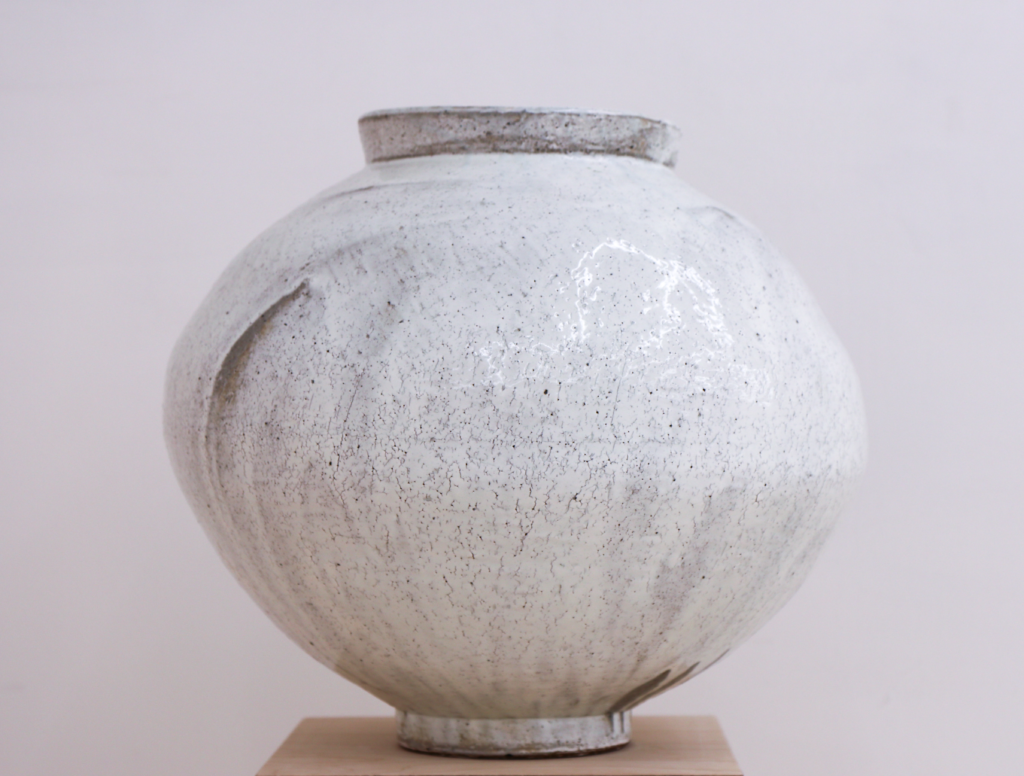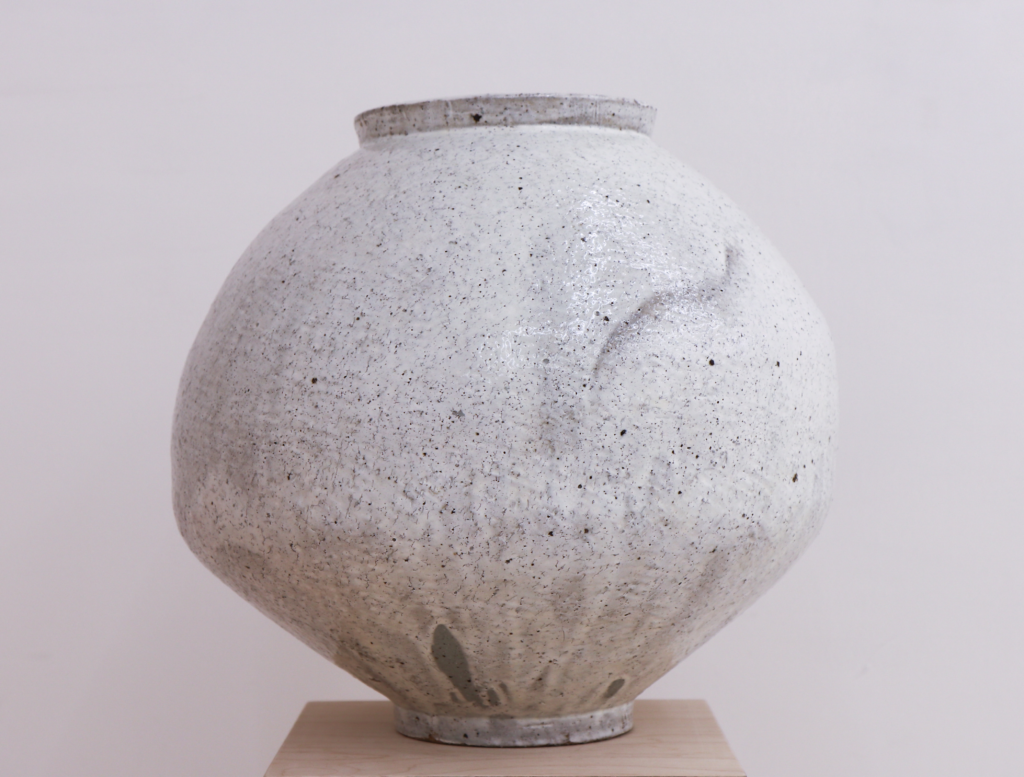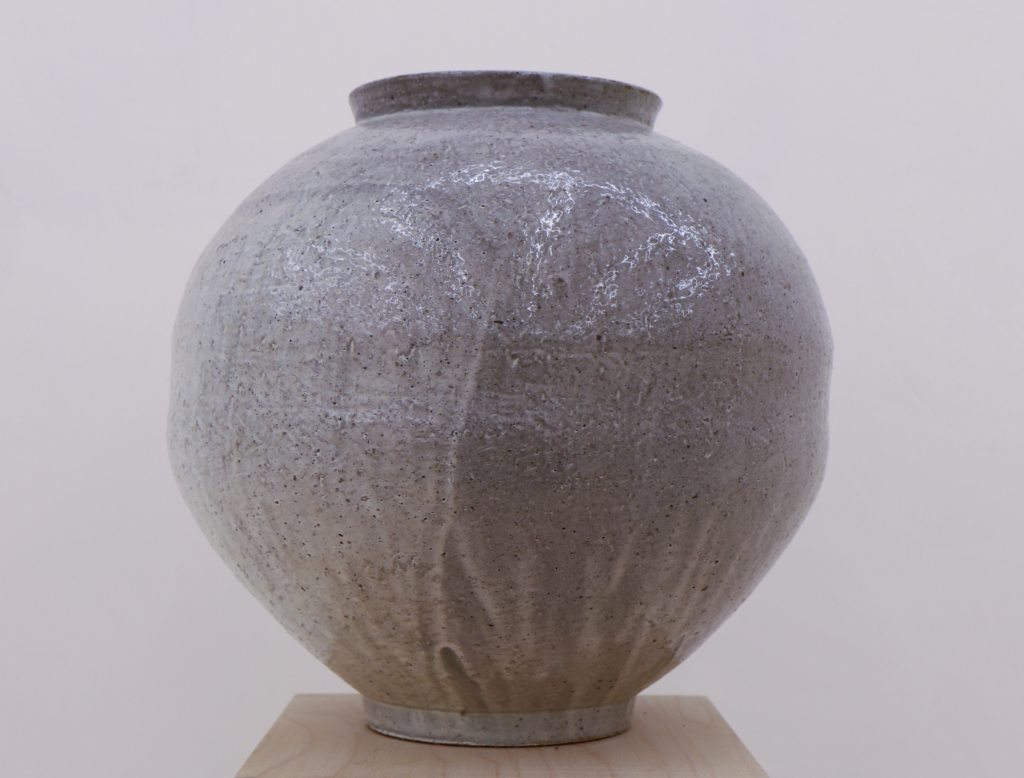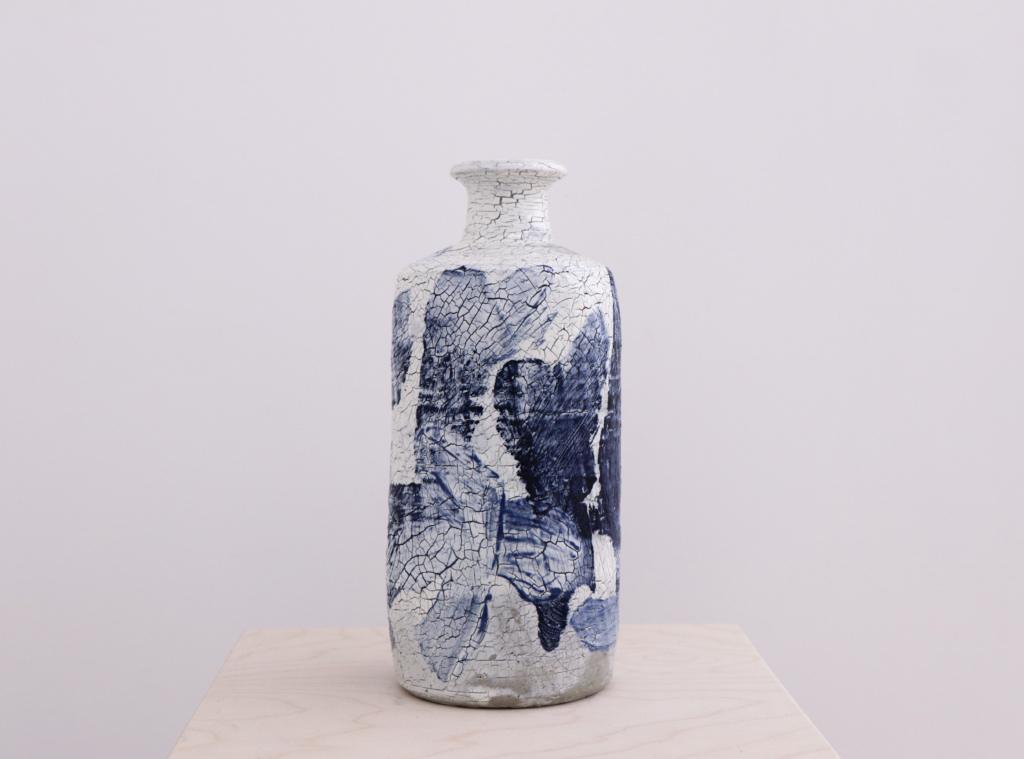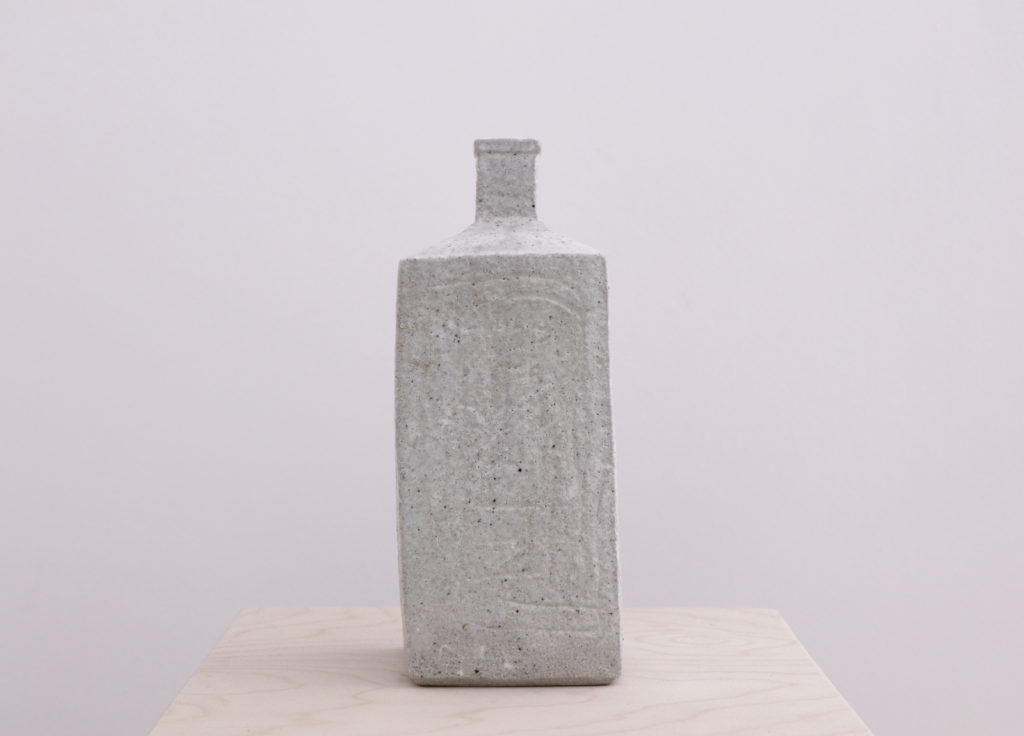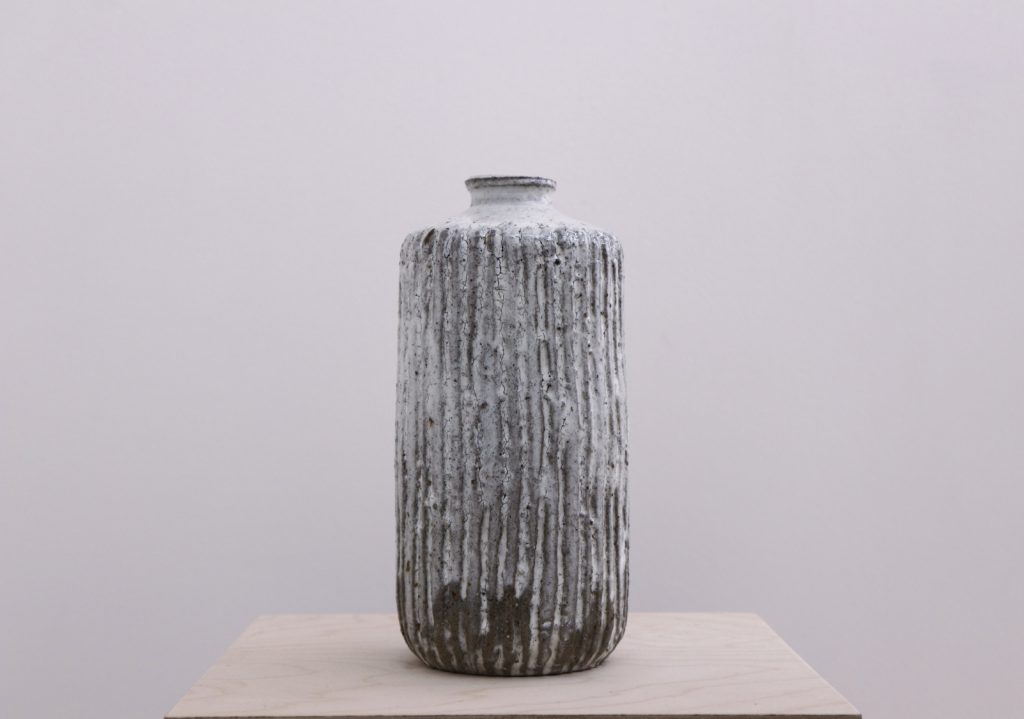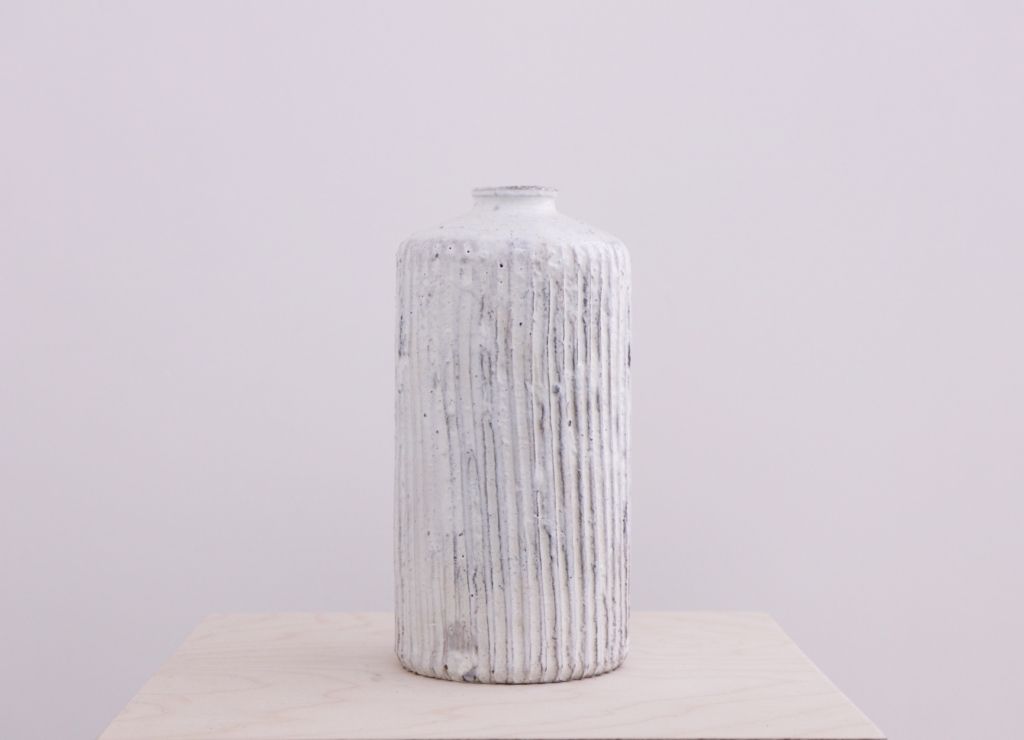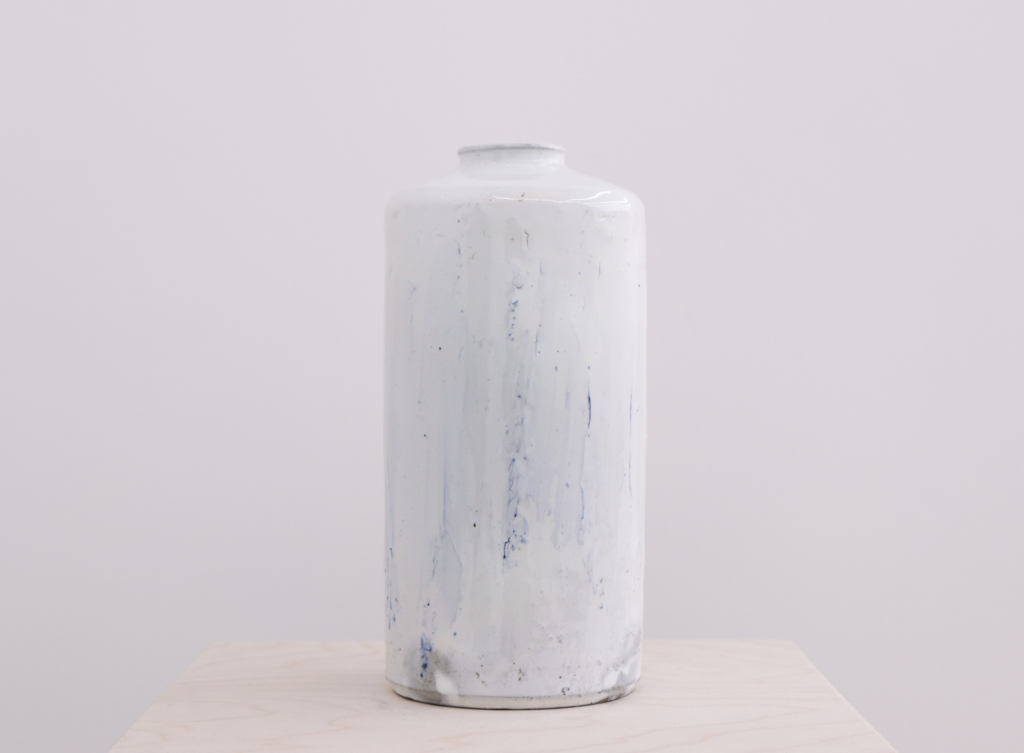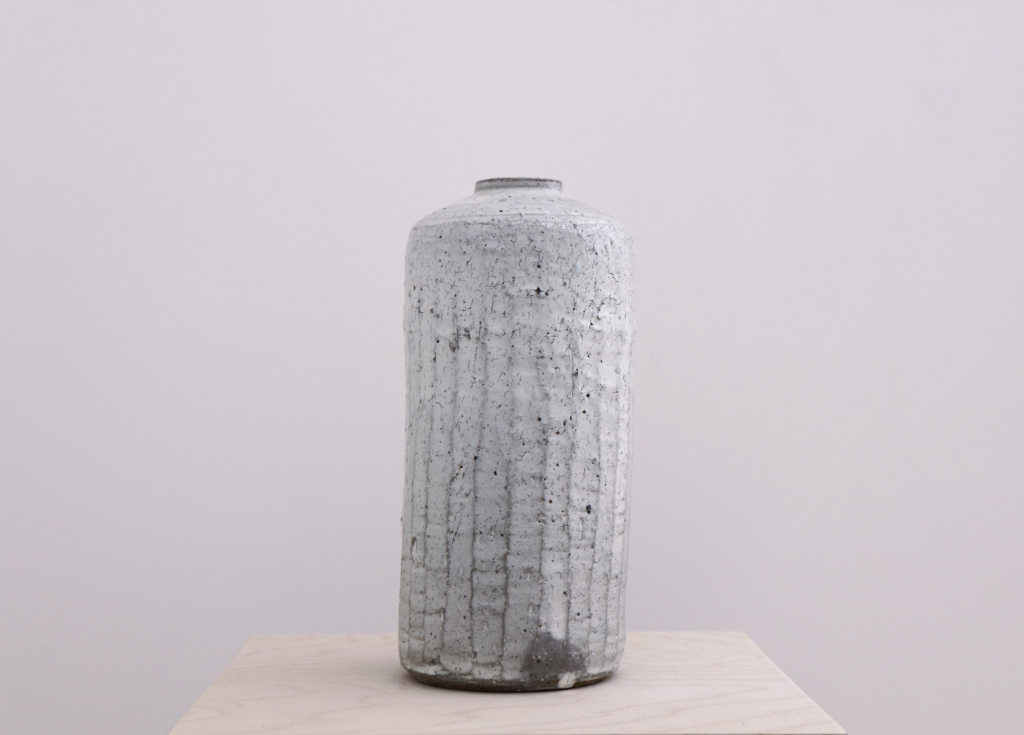The Good Use of the Beauty of Buncheong
Sungwook Park
Apr 8 - May 6, 2023
Tue - Sat, 11am - 6pm
The most beautiful order of the world is a random gathering of things insignificant in themselves.
Herakleitus
Roughly speaking, there are two things that Modern art has excluded; beauty and utility. This fact was laid out in a slightly different order when a Korean design critic, Beom Choi, said, "In Modern aesthetics, the opposite of beauty was utility, not ugliness." As we might all agree by now, in art, ugliness is not the enemy of beauty; it is almost the other side of the same coin. Nevertheless, it is still interesting to think that the opposite of beauty is utility. If we can "use" it, it can't possibly be considered to be art. In art, the opposite of beauty is more like the absence of something. It is when you desperately notice something, like the lack of originality, cleverness, or even greatness. So is "utility" can be seen as an absence of something? Absence of metaphysical thoughts or, perhaps, sublimity?
As art became incorporated into the liberal arts in Modern times, it was probably crucial to ostracize the "everyday" elements in shaping the field of art.(with the exception of Bauhaus). Before industrialization, everything we looked at and used was made by hand by artisans and artists. Clothes and shoes, bowls and jars, tables and chairs, and paintings and sculptures… Among them, paintings and sculptures that we are not in "direct contact" with when we "use" them were separated into fine art, the realm of the sublime(I said it again!), and others were mostly left in the world of mass production. Most of the things we use, the clothes we wear, and the chairs we use are produced in factories, which are called "products."
Then, being neither a work of art nor a product, what is a craft? What are the elements that make a craft? Crafts are made by hand. Crafts are things we use in our everyday life. Crafts are based on certain "skills" based on the knowledge handed down from the past. Living in a world where almost everything is mass-produced, crafts today are considered more pricey, have a more unique quality, and more beautiful than "products." These qualities almost sound like that of artworks. Except for the fact that we use craft works in everyday life. And it brings out one question. Is the beauty required for crafts different from the beauty of art?
As proponents of traditional crafts and simple life, in the West, there is William Morris(1834-1896) and Soetsu Yanagi(1889-1961) in the East. They emphasized beauty in life and thought beauty and utility were the same. William Morris valued elaborate details and ornamentation (not realized in mass production), but rejected the excesses of the Victorian era and emphasized the simplicity in life, in harmony with nature. Yanagi also saw beauty in the simplicity in life and the humble objects we use in our daily lives. "The beauty we see in them is honest and sincere, an expression of humility" His love for Korean folk craft stemmed from this philosophy. He believed that everyday things had "hearts." To him, these objects were deeply related to the lives of craftsmen who are "honest and sincere people, who received the blessings of heaven.” He famously said "The world of utility and beauty are not separate realms. Who is to say that spirit and matter are not one?"
Sungwook Park makes everyday objects; jars, bottles, tea kettles, and bowls. He uses the ceramic-making technique called Buncheong. Bold. Earthy. Dynamic. Modern. These are the adjectives Soyoung Lee, a curator at the Metropolitan Museum of Art in New York, used when describing Buncheongware. The name Buncheongware was originated from the word "Bunjang Hoecheong ware (gray-green ceramics decorated with powder)" coined by Ko Yu-seop, one of the best interpreters of Korean esthetics in the 1930s. Buncheongware has a unique character historically placed between Goryeo celadon and Joseon white porcelain, representing Korean ceramics. The Buncheong technique is derived from making Goryeo celadon, made from gray clay, dressed in white clay, and then glazed and fired. Considering that it was a technique that enabled the experimental use of various techniques, it seems to be the product of a studio discovered by artisans at the time. If Goryeo celadon and Joseon white porcelain boast classic and elegant beauty, Buncheong is characterized by its immediacy and modest aesthetics.
Sungwook Park uses the Dumbeong Buncheong technique, among other techniques of Buncheong. Dumbeong(means dipping) is a technique developed in the later period, in which you hold the bottom of the object with your hand and dip it upside down to coat it with white slip. It is often said that this technique was mainly used by commoners who longed to have white porcelain mainly used by aristocrats. The Dumbeong technique, while exhibiting the simple elegance of white porcelain, has a unique boldness, texture, modesty, and modern quality. What makes Park’s Buncheong stands out is that he values an honest and restrained attitude as a work ethic. It is because he is a person who silently makes objects of everyday life, wary of crafts being incorporated into the boisterousness of the art world. Since 1999, he has built a firewood kiln and studio in Yangpyeong, a rural area outside Seoul, and has been living a life devoted to his work.
<The Good Use of the Beauty of Buncheong> is the first solo exhibition of a ceramist that Thomas Park holds. Its seed was planted in a special exhibition called Clumsy拙 held in Seoul in October 2020. Due to the pandemic, everything in New York was shut down, and it didn’t feel safe to be there. I fled to Seoul, and while staying at a hotel, I came up with the idea for an exhibition; a room filled with one big question of "how to live,” moveable, but with esthetics. Then the image of a rice bowl came to mind; a humble-looking rice bowl that is simply beautiful. I had artwork shipped from New York for the show, had a makeshift bed built, had a portable blanket made with a bag that carries it, and put ten rice bowls by Sungwook Park on the shelf hanging over the bed. Like a hearth, an antique brazier was put beside the bed. In the middle of the room, two moon jars by Park were placed as if the moonlight was streaming in. Everything happened to come together in a room, and it was beautiful.
Mimi Park
세상에서 가장 아름다운 질서는 그 자체로 중요함을 내세우지 않는 것들을 순서없이 모아 놓은 것이다.
헤라클레이토스
거칠게 말해서 현대 미술이 배제시켰던 것이 두가지 있다. 아름다움과 실용성이다. 한국의 디자인 평론가 최 범의 말 속에 이 사실이 다른 배열로 잘 응축되어 있다. “근대 미학에서 미의 반대는 추醜가 아니라 용用이었다.” 요즘은 모두 동의하겠지만, 예술에서 추함은 아름다움의 적이 아니다. 심지어 거의 동전의 양면과도 같다고 할 수 있다. 그렇다해도 미의 반대가 실용성이라는 말은 여전히 흥미롭다. 무언가 "사용"할 수 있다면 그것은 예술이 될 수 없다? 생각해보면 예술에서 미의 반대는 무언가의 부재이다. 작품 앞에서 서서 뭔가 모자람을 느낄 때, 그러니까 독창성이나 영리함, 심지어 위대함까지도 말이다. 그렇다면 “실용성"을 무언가의 부재로 볼 수 있을까? 형이상학적 사상의 부재? 또는 어쩌면 숭고함의 부재?
모던에 와서 예술이 인문학에 편입되면서 예술이라는 영역을 형성하는 데 있어 '일상'의 요소를 배척하는 것이 중요했을지도 모른다.(바우하우스는 예외) 산업화 이전에는 우리가 보고 사용하는 모든 것을 손으로 만들었고, 이는 장인의 영역이었다. 옷과 신발, 그릇과 항아리, 탁자와 의자, 그림과 조각… 이 중에서 우리가 “직접” 사용하지 않는 그림과 조각이 예술이라는 영역, 어떤 숭고한 영역으로 따로 분리되었고, 그 외의 것들은 대개 대량 생산이라는 환경에 놓이게 되었다. 우리가 입는 옷이나 사용하는 의자 등 모든 것들이 대부분 공장에서 생산되고 우리는 그것을 주로 “제품”이라 부른다.
그러면 예술 작품도 아니고 제품도 아닌 공예품은 무엇인가. 공예품을 이루는 요소는 무엇인가. 공예는 손으로 만든 것이다. 공예는 우리가 일상 생활에서 사용하는 것들이다. 공예는 예전부터 내려온 어떤 “기술” 또는 “솜씨”를 바탕으로 하는 것이다. 거의 모든 것이 대량 생산되는 세상에 살다보니 지금의 공예품은 보통의 “제품”보다 가격이 비싸고, 희소성이 있고, 아름답다는 특징을 지닌다. 그렇다면 이는 거의 예술의 특징이 아닌가? 일상생활에서 사용한다는 사실을 빼면 말이다. 그리고 하나의 질문이 생긴다. 공예품에서 요구되는 아름다움과 예술의 아름다움은 다른 것인가?
대량생산된 제품에 반대하고 전통 공예의 중요성을 강조한 사람으로 서양에 윌리엄 모리스(1834-1896) 가 있다면 동양에는 소에츠 야나기(1889-1961)가 있다. 이들은 생활 속의 아름다움을 강조했고, 아름다움과 실용성이 함께 한다고 생각했다. 윌리엄 모리스는 정교한 디테일이나 장식(대량생산에서 볼 수 없는)을 중요시했지만, 빅토리아 시대의 과도함을 배격하고 생활의 단순함과 자연과의 조화를 강조했다. 소에츠 야나기는 우리가 일상 생활에서 사용하는 물건들의 단순함과 소박함에서 아름다움을 보았다. “우리가 이들에서 보는 아름다움은 정직함과 신실함, 겸손의 표현이다.” 그가 한국의 민예를 사랑한 것은 그가 가진 이러한 철학에서 비롯된 거였다. 그는 일상의 물건들에 “마음heart”이 있다고 여겼다. 이 물건들은 공예를 만드는 “정직하고 성실한 사람들, 하늘의 축복을 받은 이들”의 생활과 깊이 연관되어 있고, 실용성과 아름다움은 본질적으로 같은 것으로 보았다. “실용과 미의 세계는 별개가 아니다. 누가 정신과 물질이 하나가 아니라고 말할 수 있을까?”
박성욱은 일상의 물건을 만든다. 항아리, 병, 찻주전자와 사발 등을 만들 때 분청이라는 기법을 사용한다. “대담하고, 소박하고, 역동적이고, 현대적인!” 뉴욕 메트로폴리탄 미술관의 큐레이터 이소영이 분청사기를 설명할 때 사용한 형용사들이다. 분청사기는 1930년대 한국의 미학을 가장 잘 해석한 고유섭 선생의 '분장회청사기'라는 말에서 유래했다. 분청사기는 한국의 도자기를 대표하는 고려 청자와 조선 백자 사이에 위치한 독특한 성격이 자기이다. 이는 고려 청자에서 유래한 것으로, 주로 청자에 사용되던 회색 빛 태토로 그릇을 빚어 백토로 분장한 후 유약을 발라 굽는다. 고려의 도공들이 연마한 상감과 같은 장식 기법을 더욱 자유롭고 실험적으로 사용하게 할 수 있었던 기법인 것을 보면 당시의 장인들이 여러 실험을 통하여 발견한 공방의 산물인 듯하다. 분청에는 상감, 인화, 박지, 조화, 철화, 귀얄, 덤벙 등의 다양한 기법이 있는데, 고려 청자와 조선 백자가 고전적이고 우아한 미를 자랑한다면 분청은 그 실험성과 겸손한 미학을 그 특징으로 한다.
박성욱은 분청의 여러 기법 중 덤벙 분청을 사용하는 작가이다. 덤벙 분청은 분청의 후기 기법으로 기물의 밑부분을 손으로 잡고 거꾸로 담구어 분장토를 입히는 방법이다. 항간에는 백자를 갖고 싶어 하던 평민들이 주로 사용하던 기법이라고 일컬어지기도 한다. 그만큼 덤벙 분청 기법은 백자처럼 단순하고 담백한 미 속에 분청 특유의 대담함, 질감, 소박함, 현대성을 품는다. 박성욱의 분청이 더욱 돋보이는 이유는 그가 다른 어떤 작가보다 정직하고 절제된 제작 태도를 중요시하기 때문이다. 공예가 섣불리 예술계의 떠들썩함에 편입되는 것을 경계하고 묵묵히 일상 생활의 기물을 만드는 사람이기 때문이다. 그는 1999년부터 양평에 장작 가마와 작업실을 짓고, 작업에 헌신된 삶을 살고 있다.
이번 전시 <분청의 아름다움을 사용하다>는 토마스 파크에서 열리는, 도예 작가의 첫 개인전으로, 이 개인전의 씨앗은 2020년 10월에 서울에서 했던 “클럼지拙”라는 특별전이었다. 판데믹으로 뉴욕 전체가 문을 닫았고, 위험했고, 5개월의 고립 생활 후 서울에 들어와 임시 숙소에 지내며 전시 구상을 했다. 그 때 떠올린 것이 하나의 방이었다. 어떻게 살아야 하나?라는 커다란 질문으로 가득 찬 방, 움직이는 방, 그러나 미학적인 방이었다. 그 방을 떠올렸을 때, 사발의 이미지도 떠올랐다. 소박하고 아름다운 밥그릇. 나는 뉴욕에서 작품들을 배송하고, 해체 가능한 침대와 휴대 가능한 이불을 만들고, 그 위 선반에 박성욱의 사발 열 개를 올려놓았다. 골동 화로도 침대 맡에 두고 달빛이 흘러 들어오는 듯 둥근 달항아리 두 점을 방 한가운데 둥둥 띄웠다. 하나의 방에 모든 것이 우연처럼 마련되었고, 아름다웠다.
박상미







